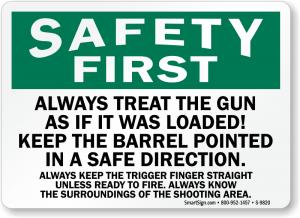Target Safety Concerns
When shooting targets, Target Safety Concerns are a real issue. Here some some basics to take into account.
- Approaching target line: Follow local protocol and double check that the shooting session is complete and no one is handling a firearm (“cold range”).
- Variety of materials: Soft-shell structure of reactive target may contain inner metal objects. Thus be sure at what you are shooting.
- Distance: relative position of target is critical for controlling harmful ricochets. Therefore please pay attention to intermediary targets half-way.
- Back stop: A major concern, back stop means complete stopping of slugs!
In physical terms, the bullet must come to zero energy. No over-penetration, no bouncing back. - Target protection: Metal shield or rubber or military sand-bags must be tested and certified. Thus you need to pay attention to deformed (including smashed and/or twisted) slugs or slow-flying projectiles. These do not smash or penetrate but tend to bounce back when hitting solid rubber objects.
- Ammo type: a major factor of ricochets and level of cumulative damage (“wear & tear”) to targets.
- Low-lever light and night activities: Light is your safety!
When shooting in low-level lighting, make sure that the shooting line is marked clearly, and that all shooters are aware of it. Never head into targets line with no lights (“cold range” protocol is not enough) - Lead and toxic dust/debris: accumulate in the range where rounds reach their terminal stop.
Protect yourself when working with targets and replace broken or well-used parts/panels (use gloves and wash hands and face).

Thank you for reading Target Safety Concerns. Contact us.

